What Is TAPI?
The Telephony Application Programming
Interface (TAPI) is one of the most significant API sets to
be released by Microsoft. The telephony API is a single set of
function calls that allows programmers to manage and manipulate
any type of communications link between the pc and the telephone
line(s). While telephony models for the pc have been around for
several years, the telephony API establishes a uniform set of
calls that can be applied to any type of hardware that supplies
a TAPI-compliant service provider interface (SPI).
This chapter provides a general overview of the Telephony API
and how it fits into the WOSA (Windows Open Services Architecture)
model. You'll learn about the two main devices defined within
the TAPI model:
- Line devices
- Phone devices
You'll also learn about the typical physical configurations used
in a TAPI model, which can be:
- Phone-based
- pc-based
- Shared or unified line
- Multiline
You'll also learn about the different types of telephone service
lines used to provide media transport services for TAPI applications,
including:
- POTS
- Digital T1
- ISDN service
- PBX service
When you complete this chapter you should have a good understanding
of the TAPI model, including the meaning and use of line and phone
devices. You'll also know the most common TAPI hardware configurations,
their advantages, and their drawbacks. Finally, you'll understand
the various physical telephone services available for use in TAPI
applications.
The telephony API model is designed to provide an abstracted layer
for access to telephone services on all Windows platforms. In
other words, the telephony API is a single set of functions that
can be used to access all aspects of telephony services within
the Windows operating system.
This is a huge undertaking. The aim of TAPI is to allow programmers
to write applications that work regardless of the physical telephone
medium available to the pc. Applications written using TAPI to
gain direct access to telephone-line services work the same on
analog or digital phone lines. Applications that use TAPI can
generate a full set of dialing tones and flash-hook functions
(like that of the simple analog handset found in most homes),
and can also communicate with sophisticated multiline digital
desktop terminals used in high-tech offices.
The TAPI design model is divided into two areas, each with its
own set of API calls. Each API set focuses on what TAPI refers
to as a device. The two TAPI devices are:
- Line devices to model the physical telephony lines
used to send and receive voice and data between locations.
- Phone devices to model the desktop handset used to
place and receive calls.
The line device is used to model the physical telephone line.
It is important to understand that, in TAPI, the line device is
not really a physical line; it's just a model or object representing
a physical line. In TAPI applications, a program could keep track
of several line devices, each of which is connected to a physical
line. That same TAPI application could also keep track of multiple
line devices that number more than the total physical lines available
to the pc.
For example, a single TAPI application could be designed to provide
voice, fax, and data links for a user. The TAPI application would
identify three line devices. One for voice calls, one for fax
transmission, and one for sending and receiving data via an attached
modem. If the pc has only one physical phone line attached, the
TAPI application would share the one line between the three defined
line devices. This is called dynamic line mapping (see
Figure 22.1).
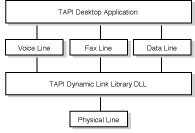
Figure 22.1 : TAPI dynamically maps line devices to physical lines.
Each time the TAPI application starts a line device, it requests
the first available physical line that has the capabilities needed
(voice, fax, data, and so on). If a line is not available, a message
to that effect is returned to the calling program. In some cases,
such as fax transmissions, the TAPI application may "queue
up" the line request for processing at a later time.
If two lines are available, the TAPI application uses them as
they are needed. If a third line device becomes active, the TAPI
application knows that there are no other available open lines
and notifies the user (or possibly queues up the outbound call
for later).
TAPI is also able to keep track of the types of lines available.
For example, one of the two lines connected to the pc may be a
dedicated, high-speed data transmission line (such as a Switched
56Kbps line), and the other a basic voice-grade line (such as
a 3.1KHz line). If the TAPI application requested a high-speed
data line, the SPI would return the handle of the Switch
56Kbps line. If the application requested a voice-grade line,
the SPI would return the handle of the voice line. If, however,
the second request was for another data line, the SPI would know
that the voice-grade line was not acceptable and would return
a message telling the TAPI application that all data lines were
busy.
The second type of device modeled by TAPI is the phone device.
This model allows TAPI programmers to easily create "virtual
phones" within the pc workspace. For example, a standard
pc with a sound card, speakers, and microphone can emulate all
the functions of a desktop phone. These virtual phones, like
their line device counterparts, need not exist in a one-to-one
relationship to physical phones. A single pc could model several
phone devices, each with their own unique characteristics. When
an actual call must be made, the user could select one of the
phone devices, enter the desired number and then the TAPI application
would attach the phone device to an available line device. Note
that the phone devices link to line devices (which eventually
link to physical telephone lines).
One of the primary uses of multiple phone devices would be the
modeling of an office switchboard. The typical switchboard has
several trunk lines that terminate at a single multiline handset.
Usually this handset has several flashing lights and pushbuttons.
The buttons are used to connect trunk lines to extension phones
within the office. The extension phones could be modeled as phone
devices on a receptionist's screen. The incoming trunk lines could
be modeled as line devices. As calls come in, the receptionist
would "pick up" a line, "drop" it onto the
switchboard phone device, determine to whom the call should be
routed, and then pick up the call off the switchboard phone and
drop it onto the appropriate extension (see Figure 22.2).
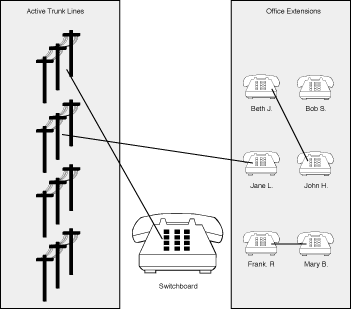
Figure
22.2 : A virtual switchboard using TAPI phone and
line devices.
TAPI is able to accomplish its task by dividing the job into two
distinct layers: the client API and the SPI. Each interface is
a set of functions designed to complete generic telephony tasks
such as opening a line, checking for a dial tone, dialing a number,
checking for a ring or a busy signal, and so on. The client API
sends requests from the application to the SPI for each task.
It is the job of the SPI to complete the task and pass the results
back to the calling program through the client API. Does any of
this sound familiar? It should. TAPI is a full member of the WOSA
(Windows Open Services Architecture) model.
By acting as part of the WOSA model, TAPI provides a complete
telephony implementation for Windows operating systems without
forcing the programmer to learn vendor-specific APIs. Application
developers can focus on delivering the features needed most by
users and leave the details of vendor-specific implementation
to the hardware driver (SPI) programmers. At the same time, hardware
vendors can spend time implementing a single set of SPI calls
that they can be assured will work on all Windows platforms.
The TAPI model is designed to function in several different physical
configurations, which each have advantages and drawbacks. There
are four general physical configurations:
- Phone-based-This configuration is best for voice-oriented
call processing where the standard handset (or some variation)
is used most frequently.
- pc-based-This configuration is best for data-oriented
call processing where the pc is used most frequently for either
voice or data processing.
- Shared or unified line-This is a compromise
between phone-based and pc-based systems. It allows all devices
to operate as equals along the service line.
- Multiline-There are several variations of the multiline
configuration. The primary difference between this configuration
and the others is that the pc acts as either a voice-server or
a call switching center that connects the outside phone lines
to one or more pcs and telephone handsets. The primary advantage
of multiline configurations is that you do not need a direct one-to-one
relationship between phone lines and end devices (phones or pcs).
In phone-based TAPI configurations, the standard telephone handset
is connected to the telephone switch and the pc is connected to
the telephone (see Figure 22.3).
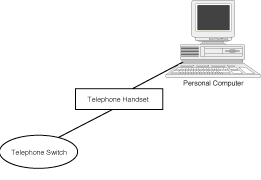
Figure 22.3 : A typical phone-based TAPI configuration
This configuration is most useful when the telephone handset is
the primary device for accessing the telephone line. Since the
telephone rests between the pc and the switch, the pc may not
be able to share in all the activity on the line. In the example
shown in Figure 22.3, the pc could not be included in a conference
call if the handset originated the call since no line can be "conferenced"
with itself and the call originates "upstream" from
the pc.
A phone-based configuration does not preclude the use of the pc
to originate calls. As long as the pc is equipped with a phone
card that allows dialing, the pc can originate a call and then
allow the handset to pick up on that call at any time. In other
words, even in a phone-based configuration, the pc can be used
as a dialing tool, and then hand the voice calls off to the upstream
handset device.
pc-based TAPI configurations place the pc between the telephone
switch and the standard handset (see Figure 22.4).
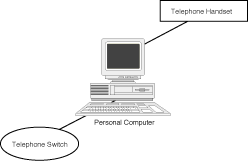
Figure 22.4 : Typical pc-based TAPI configuration
This configuration is most useful when the pc is the primary device
for accessing the telephone line. In this configuration, the pc
most often originates phone calls. Typically, this is done via
a phone card and software on the pc that manages a list of phone
numbers and handles the dialing of the phone. Depending on the
exact media mode of the call, the pc can be used to display digital
data on screen while handling voice information, too.
The pc-based configuration illustrated in Figure 22.4 also allows
for originating calls from the handset. In this case, calls can
be shared by the pc since the data stream is passing through the
pc to the switch. Users could originate a voice call through the
handset and then switch to the pc to capture and display digital
data sent over the same line.
Another major advantage of the pc-based configuration is that
the pc can act as a call manager for the handset. This is especially
valuable in a mixed-mode environment where voice, data, and fax
are all coming in to the same phone address. For example, as a
call comes in to the attached phone line, the pc can answer the
call and determine the media mode of the call. If it is a fax
call, the pc can route the call directly to an attached fax machine
(or to the fax driver on the pc). Data calls can be handled directly
by the pc and voice calls can be forwarded to the attached handset.
In a pc-based configuration, the pc can also be used for call
screening and message handling. TAPI-compliant software could
record incoming messages for the user and place them in a queue
for later review, or forward calls to another address. With the
addition of caller ID services from the local telephone company,
the pc could also act as a call filter agent, screening the calls
as they arrive and allowing only designated callers access to
the pc or the handset.
The shared or unified line configuration is a bit of a compromise
between pc-based and phone-based configurations. The shared line
configuration involves a split along the line leading to the switch.
Both the pc and the phone have equal (and simultaneous) access
to the line (see Figure 22.5).
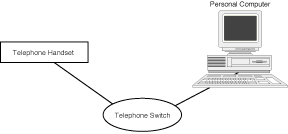
Figure 22.5 : Typical shared line TAPI configuration
The advantage of the shared-line configuration is that either
device can act as the originator of a call. The primary disadvantage
is that both devices have equal access to incoming calls. In other
words, as a call comes in, both devices will ring. Depending on
the software operating on the pc, it is possible that both devices
would attempt to answer the same incoming call. This situation
is much like having two extension phones along the same access
line.
The unified line configuration offers the combined benefits of
the pc-based configuration and the shared-line configuration.
In the unified line configuration, the access line goes directly
from the switch into a telephone card in the pc. The pc also has
handset equipment either attached to the phone card or integrated
into the pc itself. All that is really needed is a microphone
for input and speakers for output, but some systems offer headphones
or a keypad to simulate the familiar telephone handset (see Figure
22.6).
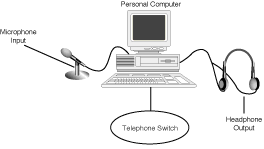
Figure 22.6 : Typical
unified line TAPI configuration
With the unified line arrangement the pc can act as either a handset
device or a pc data device. In fact, the unified line arrangement
is virtually the same as the pc-based configuration except that
the phone is internal to the pc instead of attached directly to
the pc. As new calls come in to the device, software on the pc
can determine the media mode of the call (data, fax, voice, and
so on) and route the call to the proper hardware on the pc. Also,
with the unified arrangement, users do not need to worry about
two devices ringing at the same time when a call comes in.
So far, all the configurations reviewed here have been single-line
models. This is commonly referred to as first-party call control.
TAPI is also designed to support multiline configurations. In
this arrangement, TAPI is used to provide third-party call
control.
Single lines act as the first (and only) party in a telephone
call. In a multiline environment, a device can act as a third
party in a telephone call. The most common form of third-party
call control is a central switchboard in an office. When a call
comes in, the switchboard (the third party) accepts the call,
determines the final destination of the call, routes the call
to the correct extension, and then drops out of the call stream.
These are the two basic multiline TAPI configurations:
- Voice server-Used to provide voice mail and other services
from a central location.
- PBX server-Used to provide call control for inbound
and outbound trunk lines.
In a voice server configuration, the TAPI-enabled pc acts as a
message storage device accessible from any other telephone handset.
Handsets can be configured to forward all "ring/no answer"
calls to the voice server where inbound callers are instructed
to leave recorded messages. Later, users can dial into the voice
server to retrieve their messages. Alternatively, users could
consult a universal in-box that contains voice-mail, faxes,
and e-mail. Upon selecting the voice-mail items, the pc would
play the message over the pc speakers and allow the user to speak
a reply using either the phone handset or an attached microphone.
In a PBX server configuration, the TAPI-enabled pc acts as a sort
of first line of defense for all incoming calls to a multiline
location, usually an office building. In this mode, TAPI functions
are used to accept calls, present them to an operator for review,
and then forward them to the final destination. This is using
the TAPI pc as a true third-party control system.
While a Voice Server does its work behind a standard desktop phone,
the PBX Server does its work in front of any desktop phone. In
other words, the Voice Server is designed to handle calls when
the desktop phone is busy or in some other way unable to accept
calls. The PBX Server, on the other hand, is used to accept all
calls coming into the office and route those calls to the appropriate
desktop phone. Many offices employ both PBX Server and Voice Server
systems. The PBX Server answers the incoming line and routes it
to the desktop phone. If the desktop phone is unable to accept
the call, the Voice Server takes a message and stores it for later
retrieval.
One of the primary aims of the TAPI model is to allow programmers
to design systems that will work the same way regardless of the
physical characteristics of the telephone line. TAPI functions
behave the same on analog, digital, and cellular phone lines.
TAPI is able to operate in single-line or multiline configurations.
In fact, the real value of the TAPI model for the programmer is
that users can usually install TAPI-compliant software on systems
with different physical line types and still operate properly.
It is important to know that some physical line types offer options
not available on other line types. For example, ISDN lines offer
simultaneous data and voice channels not available on POTS or
T1 lines. TAPI cannot make a POTS line offer the same services
an ISDN line offers. TAPI does, however, provide a consistent
interface to all services options shared by line types (such as
line open, dial, send data, close line, and so on).
Line types can be divided into three main groups:
- Analog lines
- Digital lines
- Private protocol lines
Analog lines are the kind of lines available in most homes. Digital
lines are usually used by large organizations, including local
telephone service providers, to transfer large amounts of voice
and data channels. T1 and ISDN lines are typical types of digital
lines. Private protocol lines are a special kind of digital line.
These lines are used within private branch exchanges (PBXs). PBX-type
lines are used to transport voice, data, and special control information
used by the switching hardware to provide advanced telephony features
such as call transfer, conferencing, and so on.
Regardless of the type of telephone line service used (POTS, T1,
ISDN, PBX), signal transmission (voice or data) must move from
the source location (the call originator) to the desired
destination. Along the way, a typical call can be converted from
analog to digital, move from physical wires, through fiber optical
cables, and possibly even by way of microwave satellite transmission
before it finally arrives at the designated destination address.
Figure 22.7 shows how an overseas call might travel through the
telephone network.
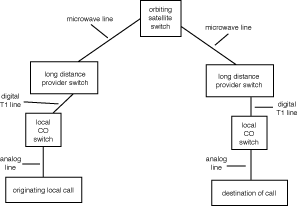
Figure 22.7 : Transmission modes for a typical
overseas telephone call
The rest of this section describes each of the telephone line
service types in greater detail.
Plain Old Telephone Service (POTS) is the line service
type provided to most homes in the United States. POTS is an analog
service that provides basic connection to the telephone company's
central office by way of a single-line link. Standard POTS users
cannot perform advanced telephone operations such as call transfers,
forwarding, or conferencing.
The analog POTS is designed to send voice signals, not data. For
this reason, POTS users must employ a data modulator-demodulator
(or modem) to send digital information over POTS lines.
The analog aspects of POTS lines limits the amount of digital
data that can be fed through the line. While 28.8Kbps service
over analog dial-up lines is quite reliable, data rates beyond
that limit require special line conditioning. Available in some
locations in the U.S. is a special dial-up service known as Switched
56 service. Switched 56 service provides for data rates of up
to 56Kbps over dial-up lines.
Recently, local telephone companies have begun offering additional
services for POTS users. Caller ID, call forwarding, and voice
message services can be purchased from local switch operators
for an additional charge. Also, a specialized set of services,
called Centrex, can be purchased from almost all local telephone
companies. Centrex services allow POTS lines to behave much like
a line tied to a private branch exchange (PBX). Centrex services
offer call waiting, call forwarding, call transfers, and other
services that provide the appearance of a multiline phone system
while still using POTS lines.
Digital T1 lines are designed to transport several conversations
at once. T1 lines can send 24 multiple phone connections at the
same time. Since T1 lines are digital instead of analog, data
rates can extend well beyond the limits of analog lines. Data
rates in the megabytes-per-minute are typical for dedicated T1
lines. T1 lines are typically used for dedicated data transmission
and for bulk transmission of multiple conversations from point
to point.
Since T1 lines are digital, the analog voice signals originating
on POTS lines at a residence must be converted into digital signals
at the central office switch before a voice conversation is transported
over T1 lines. Once the signal reaches its destination, it must
often be converted back to an analog signal to reach the final
address. Early in the deployment of T1 lines, it was common to
experience time delays or echoes during the signal conversion.
The advance of technology has all but eliminated this problem.
| Note |
European telephone lines have a similar format to the US T1 line digital format, called E1. E1 lines can handle up to 30 simultaneous conversations at one time. Although the digital format of E1 lines is different than the T1 format, central office
switching handles all translations needed and TAPI users need to do nothing special to handle calls over E1 lines.
|
The Integrated Services Digital Network (ISDN) was developed
to handle voice, data, and video services over the same line.
Although developed more than 20 years ago, ISDN lines have only
recently become available in major service markets in the United
States. In some major metropolitan areas, ISDN service is available
at price levels approaching that of analog dial-up lines. The
increased expansion of data services (such as the Internet), along
with the upcoming deregulation of the U.S. telecommunications
industry, will contribute to lowering the price and increasing
the availability of ISDN in the U.S.
The most common form of ISDN service, called Basic Rate Interface
or BRI-ISDN, provides two 64Kbps channels and one 16Kbps
control or signal information channel. The advantage
of ISDN is that the two 64Kbps B channels can be configured to
provide a single 128Kbps pipe for voice, video, or data, or the
line can be configured to provide one 64Kbps data channel and
a simultaneous 64Kbps digital voice channel. Thus ISDN service
provides for transporting more than one media mode at the same
time. In addition to the two B channels, BRI-ISDN provides a 16Kbps
control channel, called the D channel, that can be used
to send signaling information and additional control data. This
control data can contain information about the calling party (name,
location, and so on) or other supplemental information needed
to complete the media transmission.
An advanced ISDN format, called Primary Rate Interface
or PRI-ISDN, can provide up to 32 separate channels. The
PRI-ISDN format used in the US, Canada, and Japan provides 23
64Kbps B channels and one 64Kbps D channel. The PRI-ISDN format
used in Europe allows for 30 64Kbps B channels and two 64Kbps
D channels.
BRI-ISDN offers high-speed data services at very competitive costs
when compared to T1 or even Switched 56 services. In fact, ISDN
is arriving "at the curb" in some major metropolitan
areas, and residential users are now able to purchase BRI-ISDN
services for Internet use at relatively low cost. PRI-ISDN, however,
is a much more expensive service and is used by businesses that
need to quickly move large amounts of data.
The Private Branch Exchange (PBX) format is used in commercial
switching equipment to handle multiline phone systems in offices.
Typically, the local telephone provider brings multiline service
up to the PBX switch and then the PBX handles all call control
and line switching within the PBX network. PBX phones operate
on proprietary formats and are usually digital-only lines.
PBX format most often includes more than just the voice/data signal.
Impulses to control flashing lights on desktop phones, data strings
that appear on display panels, and additional information to handle
call conferencing, forward, and call screening are all usually
sent along the same line.
The exact data format of PBX lines varies between vendors. However,
TAPI applications work on all PBX lines for which the vendor has
supplied a TAPI-compliant service provider.
In this chapter you were presented with a general outline of the
TAPI model, including the definition and purpose of two devices
defined within the TAPI model:
- Line devices are used to model physical telephone lines.
- Phone devices are used to model physical telephone
handsets.
You should also know the relative advantages and disadvantages
of the four main types of TAPI hardware configurations:
- Phone-based configurations are for use in mostly
voice-oriented calling.
- pc-based configurations are for use in mostly
pc-oriented calling.
- Shared or unified line configurations
are for use when both voice and data share the phone use equally.
- Multiline configurations are for use as a voice
server (for voice-mail) or as a PBX server (for computerized switchboards).
Finally, you should be able to identify the four main types of
telephone service used to transmit the voice and data signal:
- Analog POTS (Plain Old
Telephone Service) for general voice-grade transmissions and
for data transmission up to 28.8Kbps speed.
- Digital T1 for dedicated
high-speed voice or data services (56Kbps and above).
- ISDN (Integrated Services Digital Network) for
high-speed multichannel simultaneous voice and data services.
- PBX (Private Branch Exchange) for use within
proprietary switchboard hardware in an office setting.
|
 Telephony
Programming Controls
Telephony
Programming Controls 
 Telephony
Programming Controls
Telephony
Programming Controls